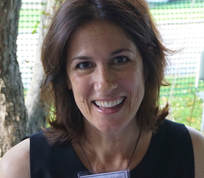 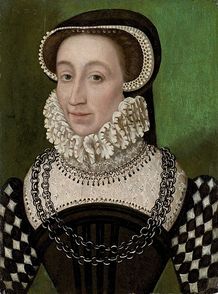 Catherine de Medici. She didn't travel light. Catherine de Medici. She didn't travel light. During the Renaissance, French kings and queens built many palaces, in an area known as the Loire Valley. The royal family would travel from palace to palace to get away from Paris, the way you might head to a lake house. The Loire Valley is not very close to Paris. It’s about 110 miles from Paris to the palace of Chambord, for instance. I wondered how long it took sixteenth century travelers to make this journey—and why there were so many palaces. First, the distance. Under the best of conditions (good roads, decent weather, level ground), humans can walk four miles per hour over long distances. Horses can’t do much better–maybe five mph—but a lot less if they’re pulling something or if roads are in awful condition. A horse can canter at 20 mph, but it can only do that for six to eight miles at a time, after which it will slow down and walk, or stop completely. So it would have taken a long time to get from place to place. Under the best conditions, a journey from Paris to Chambord would have taken three weeks. But in fact, it took a lot longer than that. Because in the sixteenth century, the royal court didn’t just hop on a horse and head to their country home. They took everything and everyone with them, loading all the stuff onto the backs of horses and mules. When Catherine de Medici was queen of France, she traveled with her ladies and gentlemen, foreign ambassadors, pet bears, servants, retainers, attendants, apothecaries, astrologists, tutors, musicians, cooking pots, food, clothing, portable triumphal arches, wall hangings, and furniture. And the reason there were so many palaces is simply that the court in Renaissance times –thousands of people–had to move around from estate to estate so as to find new hunting grounds. Once they’d exhausted the food supply in the area, they moved on to the next estate. Also, the sanitation was dreadful. After thousands of people had taken up residence in and around a great estate for a few weeks, filth piled up, and with it, stench and disease. The royal procession could be miles long. When Catherine de Medici’s court packed up and left for a new palace, the beginning of the royal caravan sometimes entered a town before those traveling at the back of it had left the last one. 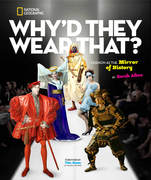 Sara Albee's recent book is Why'd They Wear That?, published by National Geographic in 2015. Get ready to chuckle your way through centuries of fashion dos and don'ts! In this humorous and approachable narrative, you will learn about outrageous, politically-perilous, funky, disgusting, regrettable, and life-threatening creations people have worn throughout the course of human history, all the way up to the present day. For more information, click here. MLA 8 Citation
Albee, Sarah. "Renaissance Road Trips." Nonfiction Minute, iNK Think Tank, www.nonfictionminute.org/the-nonfiction-minute/renaissance-road-trips.
0 Comments
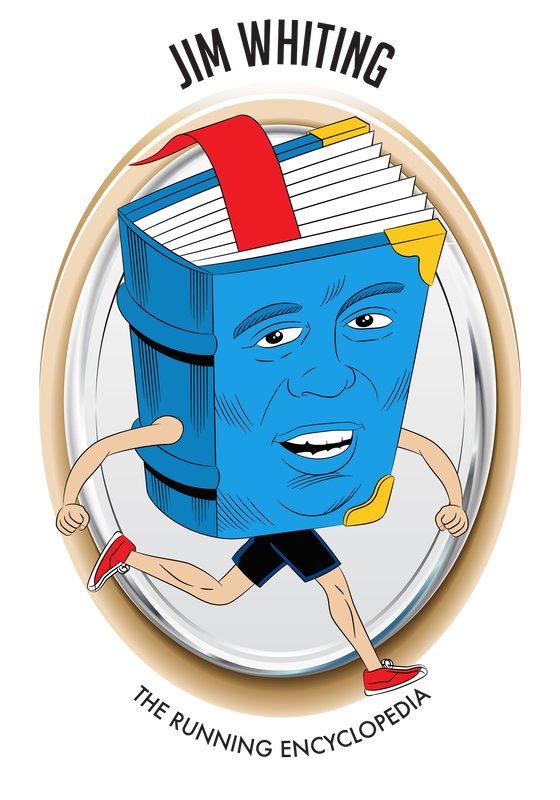 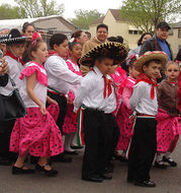 A Cinco de Mayo celebration in ST. Paul, Minnesota. "Cinco26" by Rena Dehler-Rena Dehler. Licensed under CC by SA 3.0 via Wikimedia Commons. A Cinco de Mayo celebration in ST. Paul, Minnesota. "Cinco26" by Rena Dehler-Rena Dehler. Licensed under CC by SA 3.0 via Wikimedia Commons. While Cinco de Mayo is not officially a holiday, many U.S. communities celebrate Mexican culture and heritage on May 5 with parades, mariachi music, street festivals, and much more. Most celebrants, though, would probably not be able to tell you what really happened on that date. After thrusting off centuries of Spanish rule in 1821, Mexico endured several decades of economic and political instability. In 1861, Mexican president Benito Juárez suspended payment of his country’s debts to France, Spain, and Great Britain. The three countries immediately sent warships to Mexico. Juárez negotiated with Spain and Britain and their ships went home. But French emperor Napoleon III saw an opportunity to expand his country’s colonial empire and landed troops at Veracruz. They planned on capturing Mexico City, the capital. The French army at that time was generally regarded as the world’s finest and anticipated little difficulty in reaching its objective. With the Civil War having just begun, the US government couldn’t divert resources to Mexico. The first target of the invaders was the small town of Puebla de Los Angeles. More than six thousand French troops, supported by cannons, assaulted a ragtag army of inexperienced, ill-equipped Mexican defenders about half that size on May 5, 1862. Somehow the Mexicans overcame their disadvantages and defeated the French. The following year Napoleon dispatched more than 30,000 soldiers to Mexico. They seized control and installed Austrian archduke Ferdinand Maximilian as emperor of Mexico. When the Civil War ended in 1865, the US leaned on France to leave Mexico. The final French troops departed two years later. Mexican forces seized Maximilian and executed him. Today Cinco de Mayo barely causes a ripple in Mexico outside of the province of Puebla. It is not a national holiday so nearly everyone goes to work as usual. It’s a much bigger deal in the United States, which may be fitting. Some historians believe that if the French had not been defeated at Puebla de Los Angeles and seized Mexico City, Napoleon would have made an alliance with the Confederate States. The Civil War was not going well for the Union at that time and French assistance could well have swung the conflict in the South’s favor. The result would have been two separate nations. 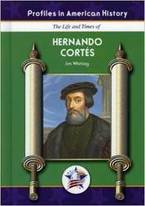 Jim Whiting has written a biography of the Spanish explorer Hernando Cortés. To some people, he was heroic. Even though he was greatly outnumbered, he was able to defeat the Aztec Emperor Montezuma and conquer the Aztec empire centered in modern-day Mexico. To others, including many Mexicans, he was a villain because he destroyed the Aztecs way of life. They believed he was a cruel man. He was also a symbol of Spanish domination. For more information, click here. Whiting, Jim. "Cinco de Mayo." Nonfiction Minute, iNK Think Tank, 4 May 2018,
www.nonfictionminute.org/the-nonfiction-minute/Cinco-de-Mayo. The great Paris tower was underway. From each corner of a broad base the size of a football field, four spidery iron structures rose, curving inward in one majestic sweep toward the middle. The construction – a web of connecting girders – called for 300 workers to assemble some 15,000 pieces of iron and snap 2.5 million rivets into place. This would be the world’s tallest man-made structure, reaching a height of 300 meters (934 feet). A glorious demonstration of engineering, it was conceived by Gustave Eiffel, the most illustrious engineer of nineteenth-century France. The tower was to be the focal point of the International Exhibition of Paris in 1889, commemorating the 100th birthday of the French Revolution. After that, since it had no practical use, it was to be torn down. It took two years, two months, and three days to build the Eiffel Tower. Eiffel used wrought iron, which was a relatively new building material at the time, used primarily for bridges and aqueducts. As the tower rose, becoming the city’s most prominent feature, not everyone approved. “Useless and monstrous,” one newspaper called it. Another described it as an “odious column of bolted metal.” Called the Magician of Iron, Eiffel’s mathematical prowess and attention to detail was legendary. To put the tower project on paper took 30 draftsmen working full time for 18 months. Every rivet of the 2.5 million needed for the structure had its designated place, down to a fraction of a millimeter. The Tower became the hit of the International Exhibition, with nearly two million people visiting it. Still, not everyone loved this prodigious web of steel girders. A famous writer was once asked why he ate lunch there every day, since he was known to hate the sight of it. He replied, “Because it’s the only place in Paris where I can’t see the damn thing.” So why wasn’t the Eiffel Tower torn down? It almost was. What saved it was the radio broadcasting center and the weather station that Eiffel installed at the top. Now France’s most famous landmark, it is not the only national symbol that Eiffel was involved with. He also built the iron skeleton of a lady we’re all familiar with: The Statue of Liberty. As for the Eiffel Tower, “I ought to be jealous of that tower,” he once said. “She is more famous than I am.” The Eiffel Tower under construction highlights the intricacy of the design as well as the massive size of the project in relation to the city of Paris. Art by Roxie Munro Eiffel's most famous works are still major tourist attractions in the 21st century. The Eiffel Tower is the most-visited paid monument in the world. An average of 25,000 people ascend the tower every day. Approximately four million people visit New York's Statue of Liberty National Monument and Ellis Island each year. Photo Benh Lieu Song viia Wikimedia Commons. Art by Roxie Munro 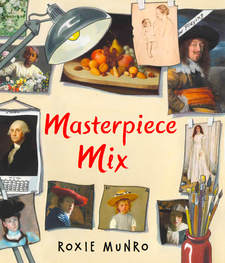 One of Roxie's most recent, Masterpiece Mix, is a book about art. As an artist searches for inspiration, she explores thirty-seven paintings of different genres, and comes up with a grand finale, using all of them. The book has "smart, concise, marvelously amplifying backmatter" (Kirkus), a dedicated web page, and free downloads. MLA 8 Citation
Munro, Roxie. "The Magician of Iron." Nonfiction Minute, iNK Think Tank, 7 Mar. 2018, www.nonfictionminute.org/the-nonfiction-minute/The-Magician-of-Iron. 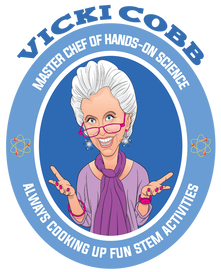 In October, 1891, 23-year-old Manya Sklowdowska arrived in Paris to attend the Sorbonne, France’s great university. She had saved money, working as a governess to get there. She was determined to make the most of her studies in science and math. Right away she was noticed partly because she was Polish, although she had changed her first name to a French version, Marie, to fit in better. She always sat in the front row of all her classes because her French was not yet fluent and she didn’t want to miss anything. She also was one of only a few female students. In a university full of smart people, she worked hard to excel. She ultimately finished first in her class and went on to make major scientific discoveries. What made Marie so single-minded and determined? Behind it all was a great love for science, a love she shared with her husband, Pierre Curie, whom she met in 1894. At that time, science was uncovering unimaginable truths in chemistry and physics. New discoveries were being made at a breath-taking pace. Science was like a game and it attracted many players. Why? 1. There was a Nobel Prize for winners, those who discovered a big idea about the natural world. There was only one nature to discover but people came at it from many directions. 2. It was collaborative—scientists shared their discoveries by publishing papers. 3. It was competitive—the papers described procedures so that scientists could check each other’s work. It kept everyone honest. The best work got the most attention. 4. The discoveries could be applied to solve problems for people. X-rays, light bulbs, phonographs, photographs, movies, and telephones would not have been possible without science. 5. The biggest prize was the idea of the atom and its structure. Many scientists contributed to modern atomic theory, including Marie. Marie Curie won the Nobel Prize twice for her work. At a time when women didn't even have the right to vote, she was a working mother of two daughters, a single mother after she was widowed in 1906, the founder of the Radium Institute for research and she brought the x-ray to the battlefield in WWI. She believed that science could save the world, that scientific discoveries belonged to everyone. And she refused to benefit financially from her discoveries. She lived by the highest principles of honesty and integrity. She was a true champion of the science game. 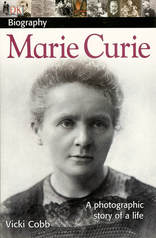 DK Biography: Marie Curie tells the story of the discoverer of radium, from her childhood in Warsaw, to her experiments with radioactivity in Paris, to her recognition as one of the preeminent scientists of her time. Filled with archival photographs and amazing fact boxes, this biography paints Marie Curie as the brave and brilliant scientist that she was. Vicki Cobb is a member of iNK's Authors on Call and is available for classroom programs through Field Trip Zoom, a terrific technology that requires only a computer, wifi, and a webcam. Click here to find out more. MLA 8 Citation
Cobb, Vicki. "Marie Curie: An Elite Player in the Science Game." Nonfiction Minute`, iNK Think Tank, 30 Jan. 2018, www.nonfictionminute.org/ the-nonfiction-minute/Marie Curie-An-Elite-Player-in-the-Science-Game.  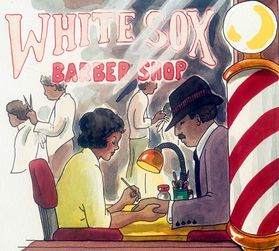 Bessie Coleman, better known as Queen Bess, was America’s first black woman pilot. Born in Texas in 1892, into a world of extreme poverty and deepening racial discrimination, her dream to “amount to something one day” was fought against overwhelming odds. Working as a manicurist in a Chicago barbershop, she read about World War I pilots. She decided that she wanted to become a pilot. But she was met with the reaction: “You, a Negro and a woman—you must be joking.” Undeterred, Bessie sought the advice of a valued customer in the barbershop. “Go to France,” he said. “The French are much more accepting of both women and blacks— but first learn the language.” That same day, Bessie began taking French lessons. A few months later, she sailed for France, and signed up with an aviation school. Her training included everything from banked turns and looping-the-loop to airplane maintenance. In 1921, she became the first black woman to earn a pilot’s license. Back in the U.S., an African-American woman pilot was big news. Thunderous applause and a rousing rendition of “The Star-Spangled Banner” greeted Bessie at her first airshow in New York. Memphis and Chicago followed. Bessie’s future never looked brighter. She managed to buy an old Curtis Jenny, a favorite plane among barnstormers. She was heading for a performance in Los Angeles, when the engine stalled; she crashed onto the street below, was knocked unconscious, broke one leg, and fractured several ribs. Distraught over having disappointed her fans, she sent a telegram to the local newspaper: AS SOON AS I CAN WALK I’M GOING TO FLY! Seven months later, she was back in a borrowed plane, performing to upbeat crowds in Ohio, Texas, and Florida. Bessie loved flying and accepted its risks, but her real ambition was to open a flight school. Sadly, she didn’t live to see her dream realized. In 1926, her old, run-down plane went into a spin. Bessie was thrown out of her seat, and fell to her death. At her funeral, thousands paid their respects to the brave young aviator. With her pluck and determination, Bessie Coleman had set an example for many black people. Shortly thereafter, the Bessie Coleman Aero Club in Los Angeles became a reality, introducing young blacks to the world of aviation. Among those inspired by Bessie was Dr. Mae Jemison, the first woman African-American astronaut. 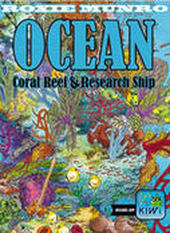 As you can see, Roxie Munro is a talented illustrator as well as a writer. She has a new series of nine desktop two-sided fold-out wordless nonfiction books called KIWiStorybooks Jr.. They come with a stand-up "play figure" and a free interactive app loaded with games and puzzles, fascinating facts in a Q&A format, sounds, and more. OCEAN has a Coral Reef on one side and a Research Ship Laboratory on the other. Roxie is also a member of Authors on Call. You can read more about how you can have her visit your classroom with interactive videoconferencing here. MLA 8 Citation
Munro, Roxie. "Bessie Coleman." Nonfiction Minute, iNK Think Tank, 16 Feb. 2018, www.nonfictionminute.org/the-nonfiction-minute/bessie-coleman. |
*NEWS
|
For Vicki Cobb's BLOG (nonfiction book reviews, info on education, more), click here: Vicki's Blog
The NCSS-CBC Notable Social Studies Committee is pleased to inform you
that 30 People Who Changed the World has been selected for Notable Social Studies Trade Books for Young People 2018, a cooperative project of the National Council for the Social Studies (NCSS) & the Children’s Book Council
Categories
All
Abolitionists
Adams Janus
Adaptation
Adaptations
Adkins Jan
Advertising
Aerodynamics
Africa
African American History
African Americans
Africa West
Agriculture
Aircraft
Air Pilots
Air Pressure
Air Travel
Albee Sarah
Alchemy
Alligators
Allusion
American History
American Icons
Amphibians
Amundsen Roald
Anatomy
Ancient
Ancient Cultures
Anderson Marian 1897-1993
Animal Behavior
Animal Experimentation
Animal Intelligence
Animals
Animation
Antarctica
Ants
Apache Indians
Apes
April Fool's Day
Architecture
Argument
Arithmetic
Art
Art Deco
Artists
Arts
Asia
Astronauts
Astronomy
Athletes
Atomic Theory
Audubon Societies
Authors
Autobiography
Automobiles
Aviation
Awards
Bacteria
Baseball
Battuta Ibn
Bears
Beatles
Beavers
Bees
Biodegradation
Biography
Biology
Biomes
Biomimicry
Biplanes
Birds
Black Death
Black History
Blindness
Blizzards
Bombs
Bonaparte Napoleon
Boone Daniel
Botany
Brazil
Bridges
Brill Marlene Targ
Brooklyn Bridge
Brown John
Buffaloes
Building Materials
Butterflies
Caesar
Caesar Julius
Caissons
Calculus
Calendars
Cannibal
Capitals
Caravaggio
Carbon Dioxide
Carnivores
Carson Mary Kay
Cartoons & Comics
Carving (Decorative Arts)
Cascade Range
Castaldo Nancy
Castles
Castrovilla Selene
Cathedrals
Cats
Caves
Celts
Cemeteries
Chemistry
Children's Authors
Child Welfare
China
Choctaw Indians
Christmas
Chronometers
Cicadas
Cinco De Mayo
Ciphers
Circle
Citizenship
Civil Rights
Civil Rights Movements
Civil War
Civil War - US
Climate
Climate Change
Clocks And Watches
Clouds
Cobb Vicki
COBOL (Computer Language)
Code And Cipher Stories
Collard III Sneed B.
Collectors And Collecting
Color
Commerce
Communication
Competition
Compilers
Composers
Computers
Congressional Gold Medal
Consitution
Contests
Contraltos
Coolidge Calvin
Cooling
Corms
Corn
Counterfeiters
Covid-19
Crocodiles
Cryptography
Culture
Darwin Charles
Declaration Of Independence
Decomposition
Decompression Sickness
Deep-sea Animals
Deer
De Medici Catherine
Design
Detectives
Dickens Charles
Disasters
Discrimination
Diseases
Disney Walt
DNA
Dogs
Dollar
Dolphins
Douglass Frederick 1818-1895
Droughts
Dr. Suess
Dunphy Madeleine
Ear
Earth
Earthquakes
Ecology
Economics
Ecosystem
Edison Thomas A
Education
Egypt
Eiffel-gustave-18321923
Eiffel-tower
Einstein-albert
Elephants
Elk
Emancipationproclamation
Endangered Species
Endangered-species
Energy
Engineering
England
Englishlanguage-arts
Entomology
Environmental-protection
Environmental-science
Equinox
Erie-canal
Etymology
Europe
European-history
Evolution
Experiments
Explorers
Explosions
Exports
Extinction
Extinction-biology
Eye
Fairs
Fawkes-guy
Federalgovernment
Film
Fires
Fishes
Flight
Floods
Flowers
Flute
Food
Food-chains
Foodpreservation
Foodsupply
Food-supply
Football
Forceandenergy
Force-and-energy
Forensicscienceandmedicine
Forensic Science And Medicine
Fossils
Foundlings
France
Francoprussian-war
Freedom
Freedomofspeech
French-revolution
Friction
Frogs
Frontier
Frontier-and-pioneer-life
Frozenfoods
Fugitiveslaves
Fultonrobert
Galapagos-islands
Galleys
Gametheory
Gaudi-antoni-18521926
Gender
Generals
Genes
Genetics
Geography
Geology
Geometry
Geysers
Ghosts
Giraffe
Glaciers
Glaucoma
Gliders-aeronautics
Global-warming
Gods-goddesses
Gold-mines-and-mining
Government
Grant-ulysses-s
Grasshoppers
Gravity
Great-britain
Great-depression
Greece
Greek-letters
Greenberg Jan
Hair
Halloween
Handel-george-frederic
Harness Cheryl
Harrison-john-16931776
Health-wellness
Hearing
Hearing-aids
Hearst-william-randolph
Henry-iv-king-of-england
Herbivores
Hip Hop
History
History-19th-century
History-france
History-world
Hitler-adolph
Hoaxes
Holidays
Hollihan Kerrie Logan
Homestead-law
Hopper-grace
Horses
Hot Air Balloons
Hot-air-balloons
Housing
Huguenots
Human Body
Hurricanes
Ice
Icebergs
Illustration
Imagery
Imhotep
Imperialism
Indian-code-talkers
Indonesia
Industrialization
Industrial-revolution
Inquisition
Insects
Insulation
Intelligence
Interstatecommerce
Interviewing
Inventions
Inventors
Irrational-numbers
Irrigation
Islands
Jacksonandrew
Jazz
Jeffersonthomas
Jefferson-thomas
Jemisonmae
Jenkins-steve
Jet-stream
Johnsonlyndonb
Jokes
Journalism
Keeling-charles-d
Kennedyjohnf
Kenya
Kidnapping
Kingmartinlutherjr19291968
Kingmartinlutherjr19291968d6528702d6
Kings-and-rulers
Kings Queens
Kings-queens
Koala
Labor
Labor Policy
Lafayette Marie Joseph Paul Yves Roch Gilbert Du Motier Marquis De 17571834
Landscapes
Languages-and-culture
Law-enforcement
Layfayette
Levers
Levinson Cynthia
Lewis And Clark Expedition (1804-1806)
Lewis Edmonia
Liberty
Lift (Aerodynamics)
Light
Lindbergh Charles
Liszt Franz
Literary Devices
Literature
Lizards
Longitude
Louis XIV King Of France
Lumber
Lunar Calendar
Lynching
Macaws
Madison-dolley
Madison-james
Madison-james
Mammals
Maneta-norman
Maneta-norman
Marathon-greece
Marine-biology
Marine-biology
Marines
Marsupials
Martial-arts
Marx-trish
Mass
Massachusetts-maritime-academy
Mass-media
Mastodons
Mathematics
May-day
Mcclafferty-carla-killough
Mcclafferty-carla-killough
Mckinley-william
Measurement
Mechanics
Media-literacy
Media-literacy
Medicine
Memoir
Memorial-day
Metaphor
Meteorology
Mexico
Mickey-mouse
Microscopy
Middle-west
Migration
Military
Miners
Mississippi
Molasses
Monarchy
Monsters
Montgomery
Montgomery-bus-boycott-19551956
Montgomery-heather-l
Monuments
Moon
Moran-thomas
Morsecode
Morsesamuel
Moss-marissa
Moss-marissa
Motion
Motion-pictures
Mummies
Munro-roxie
Munro-roxie
Musclestrength
Museums
Music
Muslims
Mythologygreek
Nanofibers
Nanotechnology
Nathan-amy
Nathan-amy
Nationalfootballleague
Nationalparksandreserves
Nativeamericans
Native-americans
Native-americans
Naturalhistory
Naturalists
Nature
Nauticalcharts
Nauticalinstruments
Navajoindians
Navigation
Navy
Ncaafootball
Nervoussystem
Newdeal19331939
Newman-aline
Newman-aline
Newton-isaac
New-york-city
Nobelprizewinners
Nomads
Nonfictionnarrative
Nutrition
Nylon
Nymphs-insects
Oaths Of Office
Occupations
Ocean
Ocean-liners
Olympics
Omnivores
Optics
Origami
Origin
Orphans
Ottomanempire
Painters
Painting
Paleontology
Pandemic
Paper-airplanes
Parksrosa19132005
Parrots
Passiveresistance
Patent Dorothy Hinshaw
Peerreview
Penguins
Persistence
Personalnarrative
Personification
Pets
Photography
Physics
Pi
Pigeons
Pilots
Pinkertonallan
Pirates
Plague
Plains
Plainsindians
Planets
Plantbreeding
Plants
Plastics
Poaching
Poetry
Poisons
Poland
Police
Political-parties
Pollen
Pollution
Polo-marco
Populism
Portraits
Predation
Predators
Presidentialmedaloffreedom
Presidents
Prey
Prey-predators
Prey-predators
Prime-meridian
Pringle Laurence
Prohibition
Proteins
Protestandsocialmovements
Protestants
Protestsongs
Punishment
Pyramids
Questioning
Radio
Railroad
Rainforests
Rappaport-doreen
Ratio
Reading
Realism
Recipes
Recycling
Refrigerators
Reich-susanna
Religion
Renaissance
Reproduction
Reptiles
Reservoirs
Rheumatoidarthritis
Rhythm-and-blues-music
Rice
Rivers
Roaringtwenties
Roosevelteleanor
Rooseveltfranklind
Roosevelt-franklin-d
Roosevelt-theodore
Running
Russia
Safety
Sanitation
Schwartz David M
Science
Scientificmethod
Scientists
Scottrobert
Sculpture
Sculpturegardens
Sea-level
Seals
Seals-animals
Secretariesofstate
Secretservice
Seeds
Segregation
Segregationineducation
Sensessensation
September11terroristattacks2001
Seuss
Sextant
Shackletonernest
Shawneeindians
Ships
Shortstories
Silkworms
Simple-machines
Singers
Siy Alexandra
Slavery
Smuggling
Snakes
Socialchange
Social-change
Socialjustice
Social-justice
Socialstudies
Social-studies
Social-studies
Sodhouses
Solarsystem
Sound
Southeast-asia
Soybean
Space Travelers
Spain
Speech
Speed
Spiders
Spies
Spiritualssongs
Sports
Sports-history
Sports-science
Spring
Squirrels
Statue-of-liberty
STEM
Storms
Strategy
Sugar
Sumatra
Summer
Superbowl
Surgery
Survival
Swanson-jennifer
Swinburne Stephen R.
Synthetic-drugs
Taiwan
Tardigrada
Tasmania
Tasmanian Devil
Tasmanian-devil
Technology
Tecumsehshawneechief
Telegraph-wireless
Temperature
Tennis
Terrorism
Thomas Peggy
Thompson Laurie Ann
Time
Titanic
Tombs
Tortoises
Towle Sarah
Transcontinental-flights
Transportation
Travel
Trees
Trung Sisters Rebellion
Tundra
Turnips
Turtles
Typhoons
Underground Railroad
Us-environmental-protection-agency
Us History
Us-history
Ushistoryrevolution
Us History Revolution
Us-history-war-of-1812
Us Presidents
Ussupremecourtlandmarkcases
Vacations
Vaccines
Vangoghvincent
Vegetables
Venom
Vietnam
Viruses
Visual-literacy
Volcanoes
Voting-rghts
War
Warne-kate
Warren Andrea
Washington-dc
Washington George
Water
Water-currents
Wax-figures
Weapons
Weather
Weatherford Carole Boston
Whiting Jim
Wildfires
Winds
Windsor-castle
Wolves
Woman In History
Women
Women Airforce Service Pilots
Women-airforce-service-pilots
Womeninhistory
Women In History
Women-in-science
Women's History
Womens-roles-through-history
Wonder
Woodson-carter-godwin-18751950
World-war-i
World War Ii
World-war-ii
Wright Brothers
Writing
Writing-skills
Wwi
Xrays
Yellowstone-national-park
Zaunders Bo
ArchivesMarch 2021
February 2021
January 2021
December 2020
November 2020
October 2020
September 2020
June 2020
May 2020
April 2020
March 2020
February 2020
January 2020
December 2019
October 2019
September 2019
August 2019
July 2019
May 2019
April 2019
March 2019
February 2019
January 2019
December 2018
November 2018
September 2018
June 2018
May 2018
April 2018
March 2018
February 2018
January 2018
December 2017
November 2017
October 2017
September 2017
March 2017
The NONFICTION MINUTE, Authors on Call, and. the iNK Books & Media Store are divisions of iNK THINK TANK INC.
a 501 (c) (3) nonprofit corporation. To return to the iNK Think Tank landing page click the icon or the link below. :
http://inkthinktank.org/
For more information or support, contact thoughts@inkthinktank.org
For Privacy Policy, go to
Privacy Policy
© COPYRIGHT the Nonfiction Minute 2020.
ALL RIGHTS RESERVED.
This site uses cookies to personalize your experience, analyze site usage, and offer tailored promotions. www.youronlinechoices.eu
Remind me later
Archives
March 2023
February 2023
January 2023
December 2022
November 2022
October 2022
September 2022
June 2022
May 2022
April 2022
March 2022
February 2022
January 2022
December 2021
November 2021
September 2021
April 2021
March 2021
February 2021
November 2020
October 2020
September 2020
June 2020
May 2020
April 2020
March 2020
February 2020
January 2020
October 2019
August 2019
July 2019
May 2019
April 2019
December 2018
September 2018
June 2018
May 2018
March 2018
February 2018
January 2018
December 2017
November 2017
October 2017
September 2017


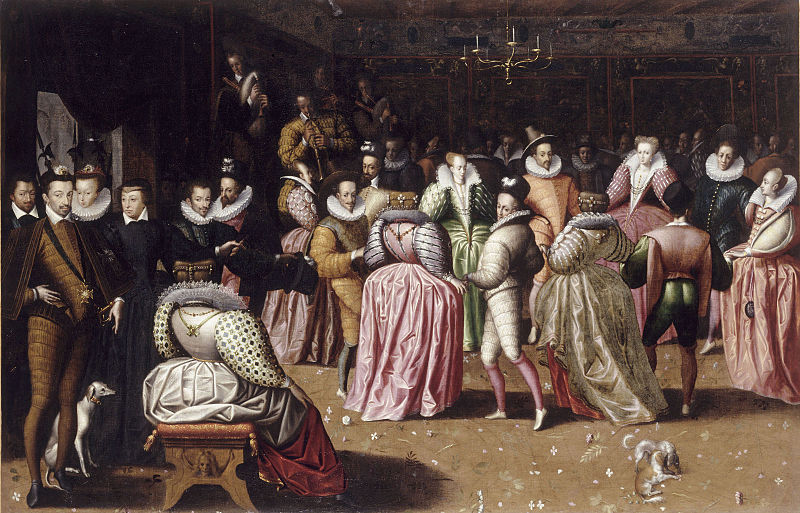
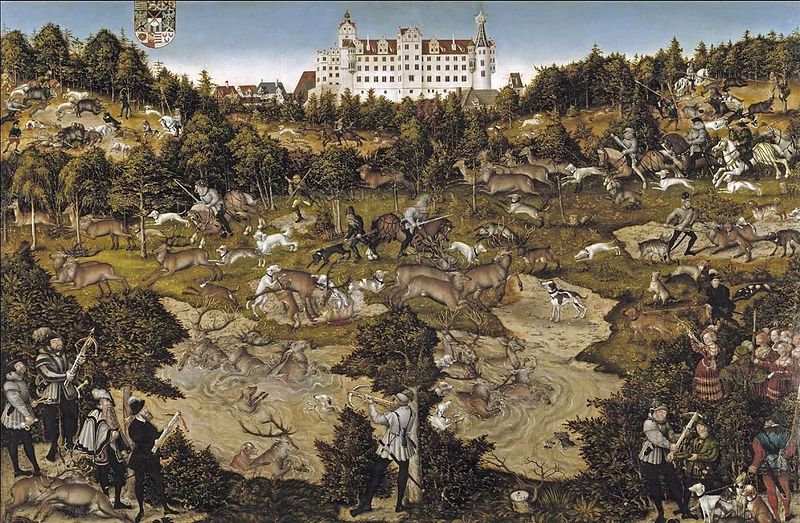
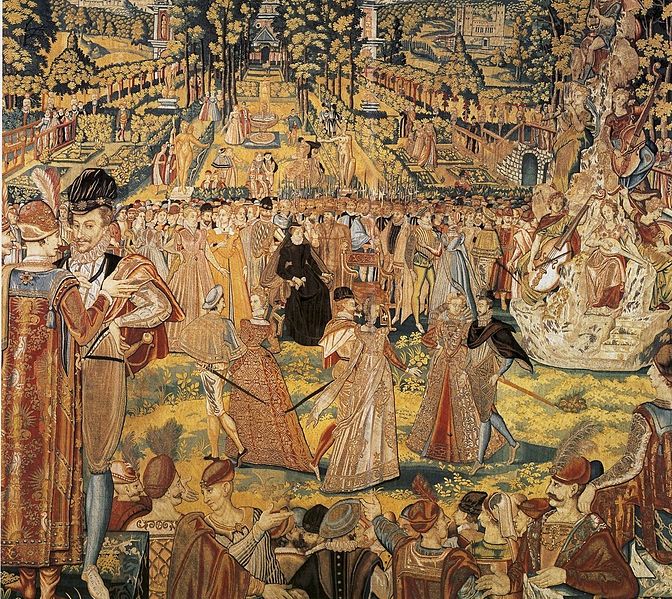


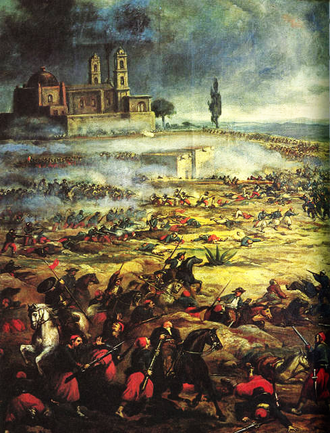
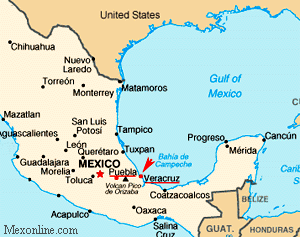
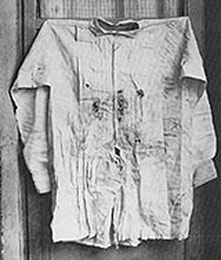



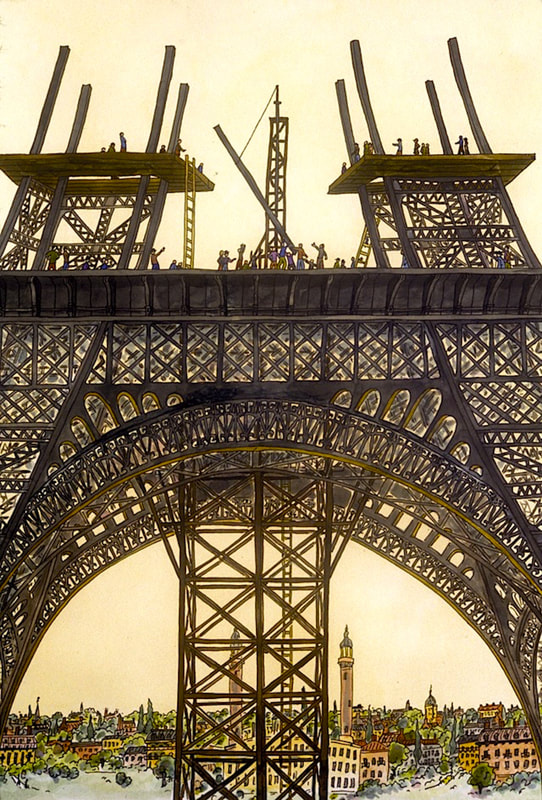
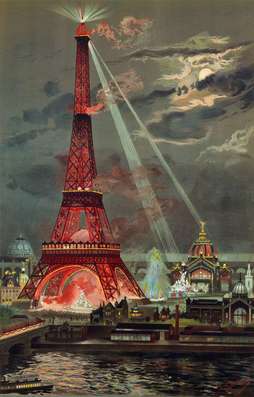
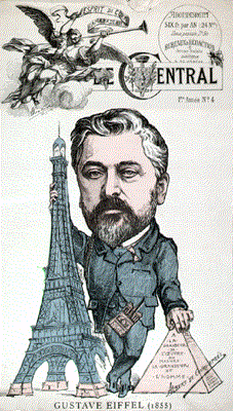
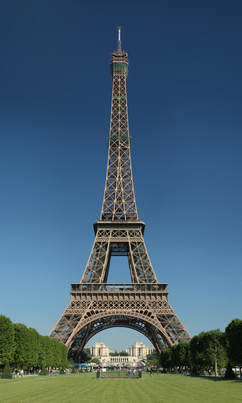
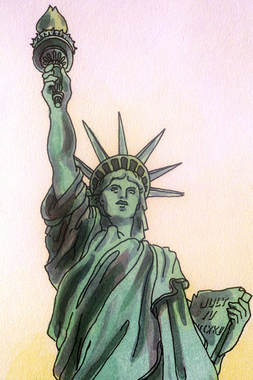


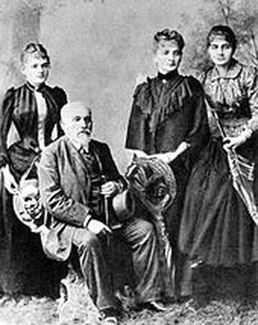
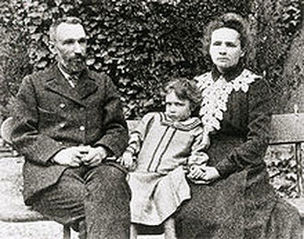
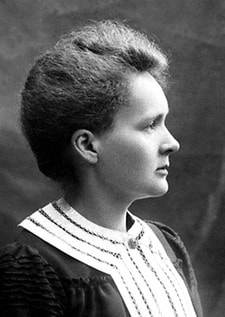
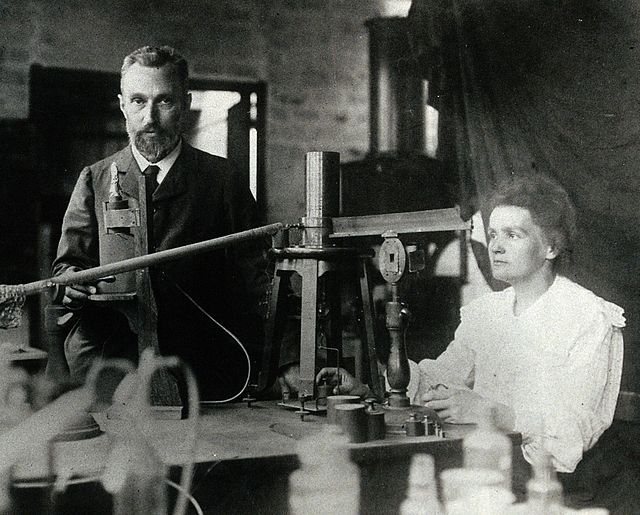



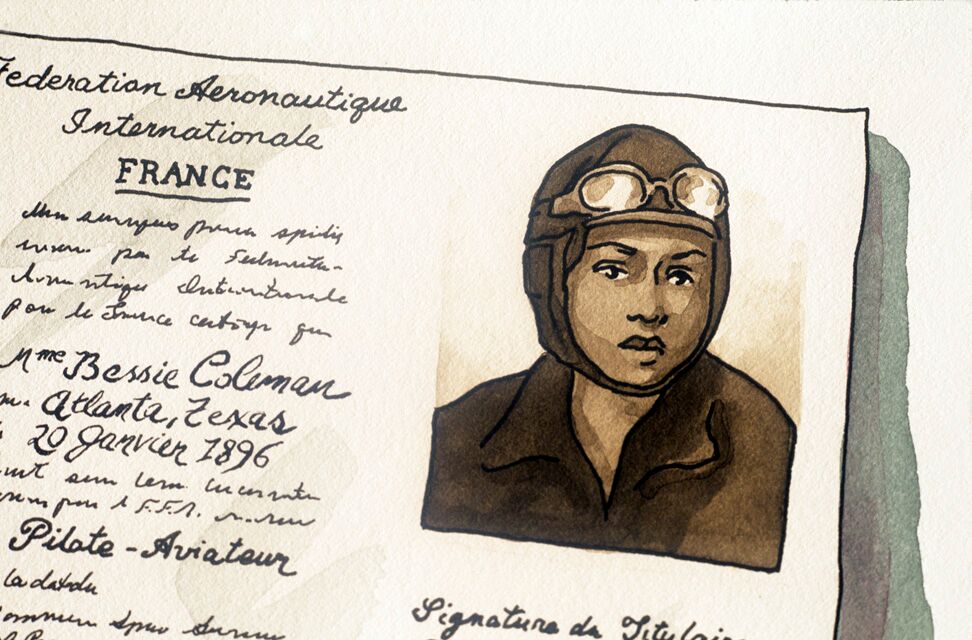
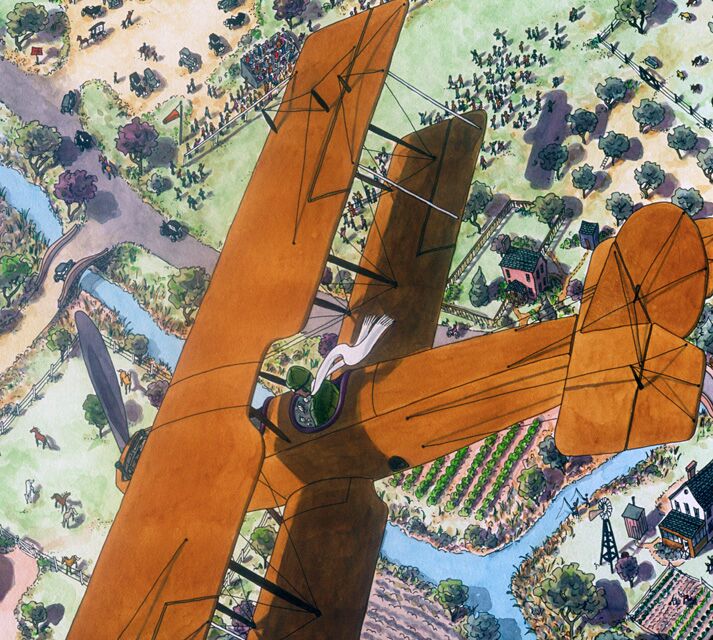

 RSS Feed
RSS Feed
